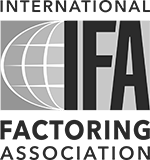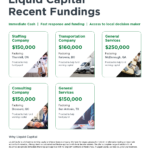Increase your cash flow with an updated sales prospecting process
If you’re trying to increase your business’s cash flow, start by reviewing your sales prospecting process.

Prospecting, relationships, business growth and cash flow are all closely connected in the relationship economy.
It’s common knowledge that having meaningful customer relationships can support business growth by generating consistent sales and cultivating loyal customers. In turn, this can create positive cash flow for your business.
Prospecting can also impact your cash flow. If your team has a system to consistently bring qualified prospects into your sales pipeline, you can expect to reliably bring in new customers, which will increase your cash flow. However, if your prospecting process is outdated, you may see your cash flow suffer.
Redefine your ideal prospect for the relationship economy
The first step for finding qualified prospects is defining who they are. This ensures that you and your sales representatives know what you’re looking for in a potential client. By developing a clear set of criteria, you can help your sales reps streamline their efforts and focus their time on prospects who are likely to convert.
Generally speaking, an ideal prospect is someone who sees value in your offer, has the budget to pay, and stands to benefit from the results your business can confidently deliver.
If you haven’t reviewed your ideal prospect criteria since the pandemic, now is the time to do so. As the relationship economy becomes more prevalent than ever, you may find that who your ideal prospect is and how they want to be sold to has changed.
Begin by examining your historical customer data and consider these questions:
- Which business or industry has the highest conversion rate?
- Which customers have the shortest sales cycles?
- What are some common attributes ideal customers share? (This may include things like their industry, job title, location, etc.)
- Which customers have the highest lifetime order value?
By analyzing this data, you’ll gain a clear profile of your ideal prospect’s priorities, buying habits and patterns. You’ll also learn how (or if) the pandemic has changed them.

Update your sales pitch and marketing materials
The next step is to review and update your sales pitch and marketing materials. In today’s relationship economy, buyers are savvier than ever before — and they are demanding a more personal and relationship-driven sales approach.
The pandemic has also increased the demand for virtual meetings, sales videos and easily accessible digital marketing materials.
Every business needs to consider how they can cultivate meaningful relationships with their customers. Customers who enjoy their experience and feel valued will become repeat patrons and help create steady cash flow for your company by telling others about their great experience.
Prospecting and selling need to go beyond a transactional focus. It is now about creating a true feeling of connection in the sales cycle, being responsive and following through when it matters. Though this shift can create a longer sales cycle, by focusing on these pillars you can strengthen bonds and, ultimately, improve your prospecting results.
Don’t let your working capital hold you back
It’s critical that your working capital can support how your prospects want to be sold to, and what your customers expect of ongoing service levels. For example, in today’s economy, offering flexible payment terms can go a long way in establishing a more personalized experience for each customer, or you may need to fund a new digital sales strategy to help support your updated sales prospecting process.
In the case of Ray Bowman, owner of tree clearing company Rayzor Edge Tree Service and a client of Liquid Capital, he discovered that he needed to balance his corporate client’s needs for longer invoice payment terms with his need to consistently pay his contractors. This led him to seek funding beyond traditional bank loans.
By working with Liquid Capital, Bowman leveraged invoice factoring to help strengthen his relationships with his subcontractors, meet his corporate clients’ needs and have the cash flow to support his working capital needs.
Create repeat business
In the relationship economy, every business needs to consider how they can cultivate meaningful relationships with their customers.
Customers who enjoy their experience and feel valued will become repeat patrons and help create steady cash flow. And it all begins with making sure your sales team is doubling down on creating long-term relationships with customers from the moment they become a prospect.





